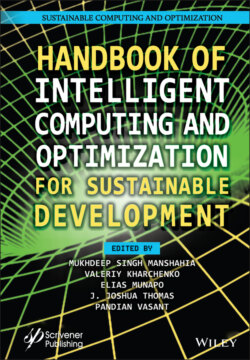Читать книгу Handbook of Intelligent Computing and Optimization for Sustainable Development - Группа авторов - Страница 64
2.5.3.2 OR Reaction
ОглавлениеLet the input variables of the OR gate be a and b and the output variable be c. The strands A, NA are prepared for the variable a; strands B, NB are prepared for the variable b; strands C, NC are prepared for the variable c. The OR reaction can be represented by A | B → C where the strand C is produced if and only if either of the strands A or B exists in the solution. The AND reaction NA ∧ NB → NC also implements the OR gate. The OR reaction is explained by the following steps (see Figure 2.21) [9].
• Step 1: The reaction solution contains OR complex and sufficient amounts of input DNA strands A and B. The OR complex initially consists of a single stranded DNA sequence 5’-C*-R-B*-A*-3’.
• Step 2: The single stranded DNA A or B, which acts as primers, hybridizes to A* or B* of the OR complex. In Figure 2.21, A hybridizes to A*. Then, DNA polymerase binds this double-stranded part.
• Step 3: DNA polymerase elongates the sequence A until it reaches to the 5’-end of the sequence 5’-C*-R-B*-A*-3’.
• Step 4: A complete double-stranded DNA sequence is formed.
• Step 5: This sequence is recognized by a nicking enzyme at the site R and R*, and it cleaves the strand R*.
• Step 6: DNA polymerase, while pushing the strand C away, elongates the strand 5’-A-B-R*-3’ again until it reaches to the 5’-end of the sequence 5’-C*-R-B*-A*-3’.
• Step 7: The output strand C is released.
By repeating the steps 5, 6, and 7, the output strand C can be amplified and released.
Figure 2.21 OR reaction.
